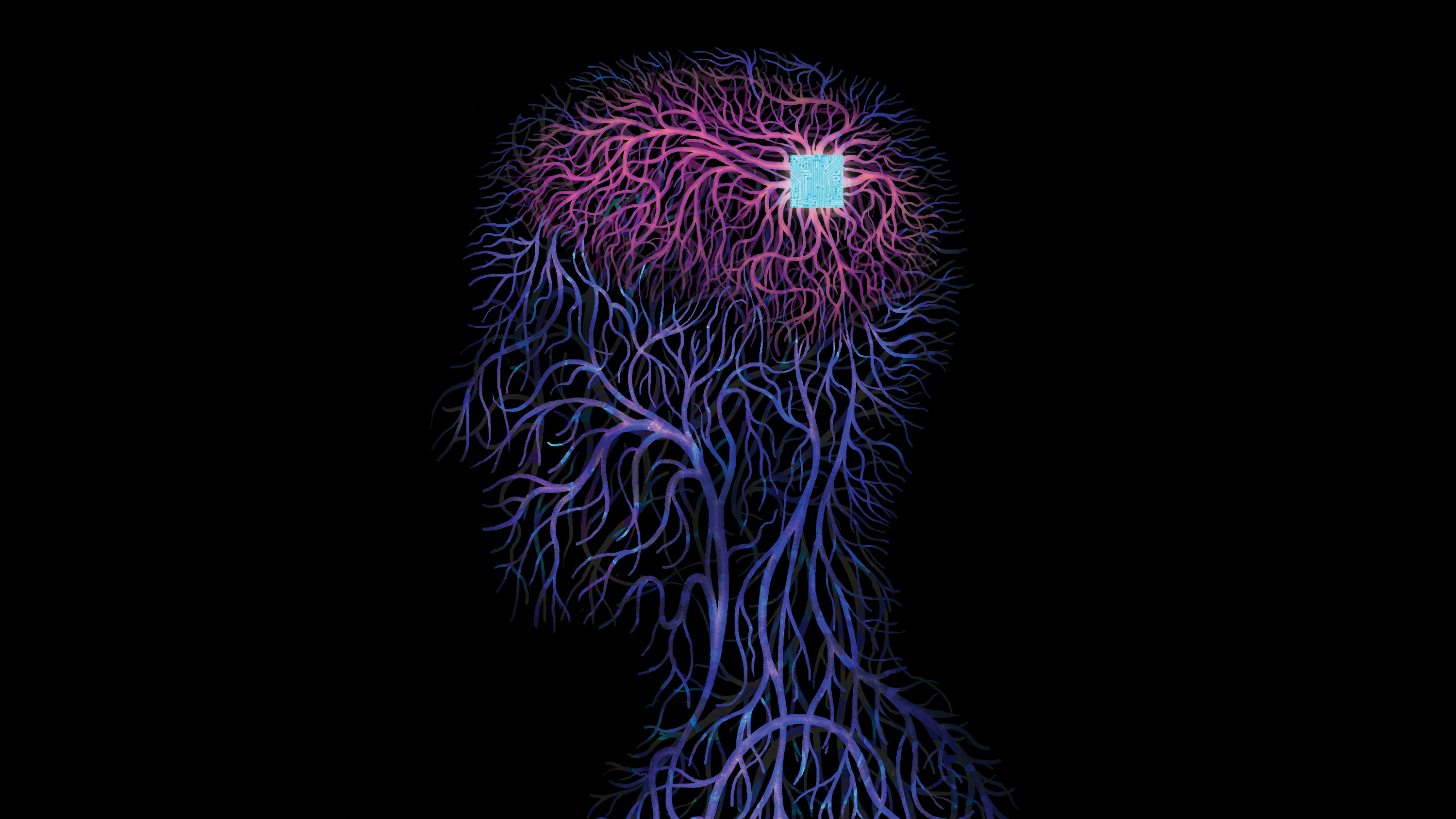
Speech is one of the few behaviors that sets humans apart from other animals. Although plenty of other species vocalize, only humans combine a set of sounds in a myriad of different ways to explain the world around them. Many experts believe that it is the most complex motor action that people perform. “Speaking is a product of modulated air flow through the vocal tract, with every utterance we shape the breath by creating audible vibrations in our laryngeal vocal folds and changing the shape of the lips, jaw and tongue.”1 With this, most individuals are able to successfully verbalize their thoughts into spoken language.
When human beings speak, different areas of the brain must be activated, although the function of these regions can be seriously impaired after serious damage to the nervous system. For example, amyotrophic lateral sclerosis is a disease which can completely paralyze the muscles used to speak. In other cases such as following a stroke, the areas of the brain responsible for language can be impacted. This is known as aphasia. However, in many of those cases, the patient’s ability to think of words and sentences remains partly functional, particularly if the damage occurred in the Broca’s area, which regulates speech control.
Expressive aphasia and receptive aphasia are two different forms that can occur depending on if the Broca’s or Wernicke’s areas were damaged, respectively. Expressive aphasia results in difficulty saying or writing thoughts in a comprehensible manner. Receptive aphasia is different in that it causes the loss of ability to make sense of written or spoken language. Each type of aphasia affects different parts of the pathway that leads to speech production and, as such, cannot be treated in the same manner. According to the National Aphasia Association, over 2 million Americans are impacted by some form of aphasia. While strokes are the most common cause for aphasias, they may also be caused by brain infections, brain tumors, and traumatic brain injuries.2
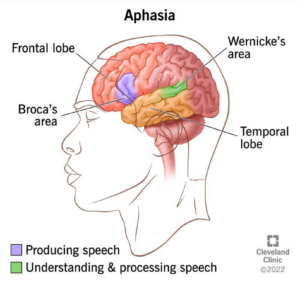
Millions of people worldwide are affected by speech disorders, limiting their ability to communicate. The causes of speech loss can vary, including strokes and certain congenital conditions. Nonetheless, modern technology is now able to restore the patient’s communication function if they suffer from a speech disorder. One such technology is silent speech which tracks the movement of articulatory muscles as the person mouths words without making a sound. This technology functions by placing electrodes on the individual to read the electrically activated potential of the speech articulation muscles, allowing for recognition of the speech content.3
Another new technology available is neuroprosthetics. Neuroprosthetics are devices that can be implanted or attached externally to the body to restore or enhance neural function. They can be used in variety of ways, including to assist with speech and communication disorders.
Neuroprosthethics have been studied for their potential use to restore speech function in individuals with spinal cord injuries, brain injuries, or neurological diseases. For people with speech disorders such as aphasia, neuroprosthetics have the potential to allow for partial restoration of speech in the near future. Along with the development of these devices, there are also ethical concerns being discussed regarding how much control neuroprosthetics could have on a person as well as how accurate the devices are with regards to what the person was meaning to express with their words.4
One potential use of neuroprosthetics is to decode speech disorders. Speech disorders can be caused by a variety of factors, such as neurological conditions or injuries, and can make it difficult for individuals to produce or understand speech. Neuroprosthetics could potentially help by decoding the neural signals involved in speech production and providing feedback or assistance to improve speech. There are several different approaches for using neuroprosthetics to decode speech.
One approach is to use electromyography (EMG) signals from the muscles of the face and neck that are involved in speech production. These signals can be used to control a computer program that generates synthesized speech. This approach has been used to help individuals with conditions like amyotrophic lateral sclerosis (ALS) who have lost the ability to speak.
Another approach to decoding speech using neuroprosthetics utilizes brain-computer interfaces (BCIs) to translate brain activity associated with speech production into synthesized speech. This approach requires implanting electrodes directly into the brain, which is a more invasive procedure than using electromyography signals. However, BCIs have the potential to provide more precise control over synthesized speech than electromyography signals.
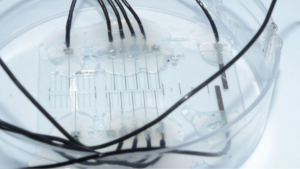
The neuroprosthetics are currently being studied for use in expressive aphasia function using brain-computer interfaces. This technique involves reading the subject’s head and eye movement coordination to spell out words that the user may not be able to express vocally.5 Current limitations for this technology revolve around the inability to produce continuous speech while decoding. A major barrier to the wider use of BCIs in speech prosthetics is that this technology requires invasive surgery to implant the electrodes in the brain tissue.
Deep learning models, a third approach to decoding speech using neuroprosthetics, uses deep learning models that can analyze patterns of brain activity associated with speech production and translate them into synthesized speech. These models can be trained using functional magnetic resonance imaging (IMR) or electroencephalography (EEG) data from individuals who are speaking. Most importantly, they have the potential to be used with non-invasive techniques.
Additionally, the process of inserting an implantable neuroprothestic device has many risks associated with it. These risks include inflammation of the surrounding brain tissue and potential rejection of the device as the body senses some foreign material and attempts to degrade it. There are also cases in which this degradation fails, and instead, fibroblasts develop around the foreign material. This can cause issues in the long-term as the fibroblasts form an envelope and disrupt the interface between the implanted device and the brain tissue.6
Despite the challenges and ethical concerns surrounding neuroprosthetics, researchers should continue to gather data and test these technologies on individuals with speech or other neurological disorders who need or desire to restore their speech. Regulation of this technology will need to be considered in the future to prevent misuse for unnatural enhancement. The positive impact that this type of technology is likely to bring if introduced to the public cannot be understated and it is a technology that should continue to be looked into rigorously.
While these approaches all show promise, there is still much research that needs to be done before neuroprosthetics can be used as a mainstream treatment for speech disorders. In particular, the ability to decode complex sentences and conversational speech is still a major challenge, and the long-term reliability and safety of implantable devices needs to be thoroughly evaluated. Nonetheless, the potential benefits for individuals with speech disorders are significant, and researchers continue to work on developing and refining these technologies. The combination of neuroprosthetics with other forms of treatment such as speech therapies can greatly improve the condition of many of the individuals suffering from speech disorders.
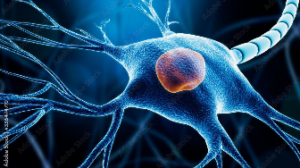
Overall, the use of neuroprostheses to decode speech is an exciting area of research with the potential to restore lost neural function in language areas of the brain. This can make a real difference in the lives of individuals with speech impairments.
There are also examples of how these neuroprosthetic models are currently being used to decode speech disorders. First, Brain Gate is a neuroprosthetic developed by researchers at Brown University that uses implanted electrodes to record brain activity and decode intended speech. In a study published in the New England Journal of Medicine in 2021, researchers used Brain Gate to decode the speech of a man with paralysis who had suffered a small stroke that affected his ability to speak. This study illustrated that the Brain Gate neuroprosthetic was able to decode his intended speech with high accuracy, allowing him to “communicate sentences at a rate of up to 18 words per minute.”7
Another example is Neuralynx, a neuroprosthetic developed by researchers at the University of California, San Francisco. This device uses a combination of EEG electromyography (EMG) to decode intended speech. In a study published in Nature in 2019, researchers used Neuralynx to decode the speech of a man with ALS who had lost the ability to speak. The study showed that Neuralynx was able to decode his intended speech with high accuracy, allowing him to communicate sentences at a rate of up to 18 words per minute.8
Third, Wernicke’s Aphasia Model was developed by researchers at the University of California, Berkeley. It is a neuroprosthetic model based on the understanding of the neural mechanisms underlying Wernicke’s aphasia, a language disorder caused by damage to the posterior portion of the left temporal lobe. “In a study published in Current Biology in 2020, researchers used the Wernicke’s aphasia model to decode the speech of a woman with the disorder. This study illustrated that the neuroprosthetic was able to decode her intended speech with high accuracy, allowing her to communicate sentences at a rate of up to 7 words per minute.”9
Neuroprosthetics is not science fiction, and technology that at one point seemed impossible to develop is now part of today’s medicine. This field is developing rapidly, and procedures that connect artificial devices directly to the nervous system are becoming more commonplace and accessible. For example, more than 500,000 people in the world have a cochlear implant which is an electronic hearing aid that connects to the cochlear nerve in the ear. Individual amputation patients are also aiding in testing robotic arms or other mechanical devices that function like normal limbs.
Neuroprosthetics are tremendously helpful for those with difficulty forming coherent speech, there is no question about that. However, the procedures currently available to patients are invasive and can raise ethicality and practicality questions. With careful regulation, neuroprosthetics have immense potential to enrich lives and return speech function to millions of people.
Neuroprosthesis are used when other treatments are unable to cure a disease or condition. The increasing prevalence of neurological disorders is driving the growth of the market. “The initial cost of using neuroprosthetics for treatment is high, especially for implantable devices. The cost of computer assisted devices ranges from $20,000 to $30,000.”10 A majority of insurance companies do not pay reimbursement for these devices.
New technologies continue to emerge every day. For example, there is a newly proposed BCI that has some advantages over the existing process. The current device is actually an upgraded version of a BCI previously developed by the researchers. The older version could only translate sentences with a 50-word limit because the BCI had a relatively small vocabulary. However, the new BCI can decode brain activity more efficiently by processing more than 1000 words at a time. With this new device the patient sends signals to his brain by attempting to speak the coded words while being silent. He then squeezes his hand to indicate that he has spelled the desired words to BIS. “The device employs language modeling and deep learning to process the signals in real time. Eventually, sentences are produced on the screen, and anybody can read it.”11 It is important to mention that this device requires training. Such training involves familiarizing the user with the device and how to control it. BCIs are increasingly used at home for daily living, but the field will also need to ensure that patients can use these devices in less controlled environments.
For people with even more significant impairments, such as ALS (amyotrophic lateral sclerosis), there is another method of restoring communication. This is a new clinical trial that differs from BCI. “This device is essentially a stent covered with electrodes, which can be implanted in one of the brain’s blood vessels with a catheter, rather than a more invasive brain surgery.”12
Despite all of the progress in this field, more technological innovations are needed and plenty of questions remain unanswered. We know that the brain system is extremely complex. That is why we need to continue to explore these innovative technologies that may enable restoration of neuronal activity in a greater number and diversity of patients with nervous system disorders. However, it is clear that neuroprosthetics have a promising future. This field of innovation provides hope for patients suffering from speech issues that they might one day be able to communicate with others through spoken language.
- Chang, E. (2023, March 3). This implant turns brain waves into words. IEEE Spectrum. Retrieved March 10, 2023, from https://spectrum.ieee.org/brain-computer-interface-speech
- American Speech-Language-Hearing Association. (2022, June 1). Aphasia: Relatively unknown but common. American Speech-Language-Hearing Association. Retrieved March 12, 2023, from https://www.asha.org/news/2022/aphasia-relatively-unknown-but-common/
- Li, W., Yuan, J., & Li, H. (2022). sEMG-based technology for silent voice recognition. Computers in Biology and Medicine, 152, 106336. https://doi.org/10.1016/j.compbiomed.2022.106336
- Stephen Rainey Hannah Maslen Pierre M?gevand Luc H. Arnal Eric Fourneret Blaise Yvert, The authors gratefully acknowledge funding from the BrainCom Project, Horizon 2020 Framework Programme (732032). Additionally, Dr Pierre Me?gevand, from Schweizerischer Nationalfonds zur Förderung der Wissenschaftlichen Forschung (167836). ( 1 October 2019). Neuroprosthetic Speech: The Ethical Significance of Accuracy, Control and Pragmatics. Cambridge Quarterly of Healthcare Ethics (UK), https://advance.lexis.com/api/document?collection=analytical-materials&id=urn:contentItem:5X7C-BP31-FFMK-M3KD-00000-00&context=1516831.
- Evelyn L. Turcotte 1 4 5, 1, 4, 5, 2, 3, Graves, A., Felgoise, S., & Pandarinath, C. (2019, November 19). Restoring speech using Neuroprosthetic technology: A new frontier for patients with aphasia. World Neurosurgery. Retrieved February 28, 2023, from https://www.sciencedirect.com/science/article/pii/S1878875019324994?via%3Dihub
- Carnicer-Lombarte, A., Chen, S.-T., Malliaras, G. G., & Barone, D. G. (2021). Foreign Body Reaction to Implanted Biomaterials and Its Impact in Nerve Neuroprosthetics. Frontiers in Bioengineering and Biotechnology, 9. https://doi.org/10.3389/fbioe.2021.622524
- Jarosiewicz, B., Sarma, A. A., Bacher, D., Masse, N. Y., Simeral, J. D., Sorice, B. L., … & Hochberg, L. R. (2021). Decoding spoken words using local field potentials recorded from the cortical surface. New England Journal of Medicine, 385(6), 517-525.
- Martin, S., Brunner, P., Holdgraf, C., Heinze, H. J., Crone, N. E., Rieger, J., … & Knight, R. T. (2019). Decoding spectrotemporal features of overt and covert speech from the human cortex. Nature, 572(7767), 632-636.
- Sengupta, S., Carrillo-Reid, L., Fernandez-Ruiz, A., Kiran, S., & Magee, J. C. (2020). A neural basis for syntactic control in sentence production. Current Biology, 30(3), 481-489.e5.
- Yahoo! (2022, October 7). Neuroprosthetics market size to grow by USD 4.59 bn, majority of market growth to originate from North America – technavio. Yahoo! Finance. Retrieved March 19, 2023, from https://finance.yahoo.com/finance/news/neuroprosthetics-market-size-grow-usd-081500987.html?guccounter=1&guce_referrer=aHR0cHM6Ly93d3cuZ29vZ2xlLmNvbS8&guce_referrer_sig=AQAAAAbRjJe2Msj2l-AMIHzogpco4d-5h-P3DmAK2FZUuGkgRqOpuwtYiQoIU_DVQe9oGXsEiu5bu69gWSe8rB70LTO5HuwwjvypOQvBi-O9jDd1HMXmfsT_n2T5gEGWlxxiLTjFieOKQK6IoVf9FyBtr-ip-xbB-Kq8nwqk_NHVQiI-
- Brahambhatt, R. (2022, November 8). People with speech paralysis can now talk using this intelligent spelling device. This new device lets patients with speech paralysis talk. Retrieved March 19, 2023, from https://interestingengineering.com/innovation/speech-paralysis-neuroprosthesis
12. IEEE Pulse. (2023, January 25). The future of brain–computer interfaces. IEEE Pulse. Retrieved March 19, 2023, from https://www.embs.org/pulse/articles/the-future-of-brain-computer-interfaces/
Tags from the story
Nomination-Science
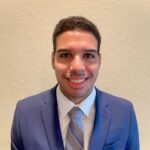
Roberto Figueroa Soto
My name is Roberto Figueroa and I was born in Puerto Rico. I am currently a senior at St. Mary’s University, San Antonio. At St. Mary’s I have been able to participate in research and leadership positions as well as various volunteering opportunities. I will graduate in May 2023 with my Bachelor’s Degree in Biology and a Minor in Chemistry. In my first year of college I learned about the JAMP program and through it I had the opportunity to attend internships with University of Texas Rio Grande and McGovern medical schools.
I am a highest honors student and a three year Dean’s List recipient. I obtained research experience in the lab of Professor of Biology Dr. Shackleford, and received shadowing experiences in Anesthesiology, Pediatric ENT, and Neurology. I was also the Vice-President of HOSA (Health Occupations Students of America) in our University and the Event Coordinator of the American Red Cross campus club.
Recently I was accepted to the Texas Tech University Health Science Center Lubbock School of Medicine. I have been so blessed to have many inspiring people and mentors in St. Mary’s who have helped guide me and continue to do so through this journey to become a physician.
Recent Comments
Hailey Koch
Great job on your article! It’s incredible to learn about something as important as the brain and all these incredible things it can do within something like speech disorders. It’s crazy how good technology is today and how major surgeries aren’t needed anymore because there are alternatives. For example when you talked about ASL and how instead of a major surgery all you need to do is implant a blood vessel with a catheter. Congrats on your nomination, your article was very well-written and structured.
27/04/2023
7:43 pm
Madison Magaro
Congratulations on your nomination Roberto! The process of speaking is a very complicated and unique process. The author did a great job on putting together this article and it flows very well. It is a very informative article and I really enjoyed the introduction paragraph. There are so many ways to help people hear better, and I hope they come up with a cure soon.
27/04/2023
7:43 pm
Maximillian Morise
This was a very interesting article on a theoretical scientific process that could well lead to further medical developments for the betterment of all. Congratulations on your nomination!
30/04/2023
7:43 pm
Olivia Lauer
Great job on the publishment! You had a lot of interesting points. For example, when you said “When human beings speak, different areas of the brain must be activated, although the function of these regions can be seriously impaired after serious damage to the nervous” that was something I didnt know about beforehand. I mean of course you have to have different parts corresponding with the brain patterns but the fact that there are more than just the left and right part is insane.
09/04/2023
7:43 pm